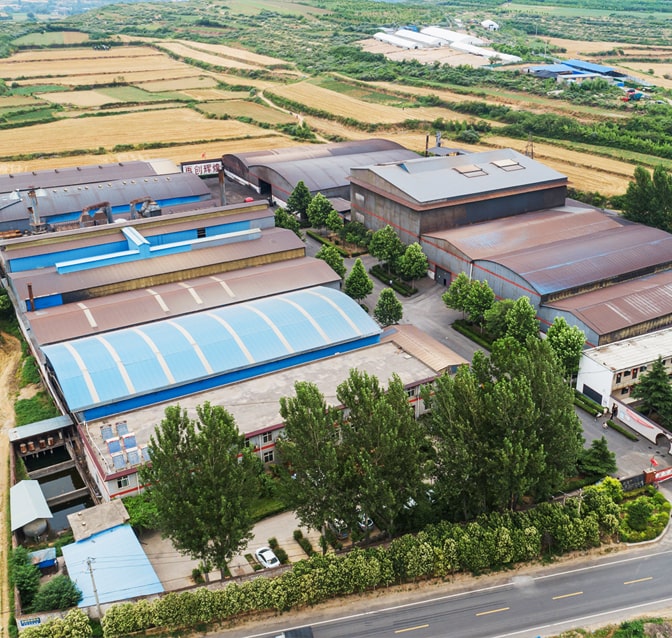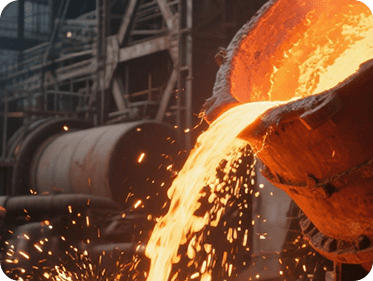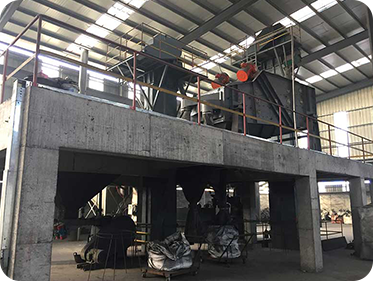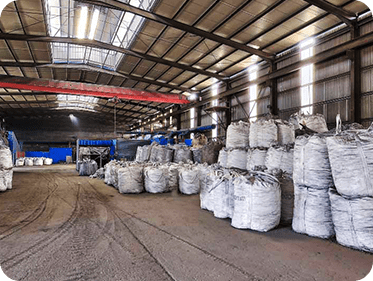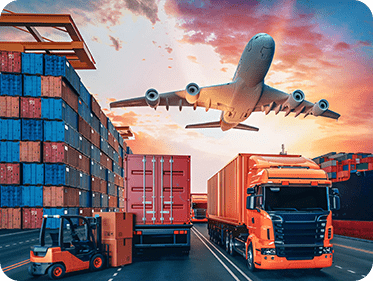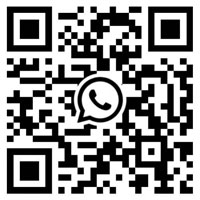What Is a Nodulizer and Why It Is Essential for Ductile Iron Production
2025.12.26
Ductile iron, also known as nodular cast iron or spheroidal graphite iron, is widely used in automotive, machinery, pipelines, and construction industries because of its excellent balance of strength, toughness, and castability.One key factor that distinguishes ductile iron from other types of cast iron is the use of a nodulizer. Without proper nodulizer treatment, true ductile iron cannot be produced. What Is a Nodulizer?A nodulizer is a magnesium-based ferroalloy added to molten iron to transform graphite from a flake form into spheroidal graphite.This change in graphite morphology is the fundamental requirement for producing ductile iron with superior mechanical properties.In gray iron, flake graphite acts as stress concentrators and weakens the metal. Nodulizer treatment eliminates this disadvantage by modifying the growth behavior of graphite during solidification.Why Nodulizers Are Essential for Ductile Iron ProductionGraphite Shape Determines Mechanical PropertiesThe performance of ductile iron is directly determined by the shape of graphite. Spheroidal graphite allows stress to distribute evenly within the iron matrix, greatly improving tensile strength, ductility, and impact resistance.Without nodulizer treatment, molten iron will solidify with flake or irregular graphite, making it impossible to achieve the mechanical performance required for ductile iron applications. How Nodulizers Work in Molten IronMagnesium is the active element responsible for spheroidizing graphite. It reacts rapidly with sulfur and oxygen in molten iron, purifying the melt and altering surface energy conditions so that graphite grows in a spherical form rather than as flakes.Because magnesium is highly reactive and volatile at high temperatures, it must be introduced in a controlled manner using suitable nodulizer grades and treatment methods.Key Technical Data for Nodulizer ApplicationThe effectiveness of a nodulizer is influenced by several key parameters. Typical industrial ranges are summarized below.ParameterTypical RangeSignificanceMg content in nodulizer3-8%Determines spheroidization strengthMg recovery rate35-50%Affects treatment efficiencySuitable particle size5-30 mmControls reaction intensityEffective holding time5-10 minutesInfluences fading behavior Common Nodulizer GradesNodulizer grades are primarily classified by magnesium content, with optional rare earth additions to improve resistance against sulfur and oxygen interference.Nodulizer GradeMg Content (%)RE Content (%)Typical ApplicationsLow Mg Nodulizer3.0-4.50-1.0Low-sulfur base iron, small castingsMedium Mg Nodulizer4.5-6.50.5-1.5Standard ductile iron productionHigh Mg Nodulizer6.5-8.01.0-2.0High-sulfur iron or demanding conditionsCommon Nodulizer Treatment MethodsDifferent foundries apply nodulizers using methods suited to their furnace size, ladle capacity, and production rhythm. Common approaches include the sandwich method, tundish cover method, and converter method.Each method requires proper control of nodulizer quantity and particle size to ensure safe reaction and stable spheroidization. A nodulizer is the foundation of ductile iron production. By controlling graphite morphology, it directly determines the mechanical performance, reliability, and consistency of ductile iron castings.With growing demands for stable quality and process efficiency, foundries are paying increasing attention to the reliability of nodulizer materials and the consistency of their chemical composition. In this context, working with experienced suppliers becomes an important part of quality control. Hongshun has long focused on the production and supply of nodulizers and related foundry alloys, providing stable compositions, controlled particle sizes, and reliable performance to support ductile iron producers in achieving consistent spheroidization and dependable casting quality.For modern foundries, selecting a proven nodulizer and a reliable partner is a practical step toward long-term production stability and performance improvement.
MORE
Customized Silicon Carbide: Why Particle Size and Purity Matter
2025.12.19
Silicon Carbide (SiC) is widely used in steelmaking and foundry industries as an efficient carbon and silicon additive. Compared with traditional alloying materials, Silicon Carbide offers excellent deoxidation capability, stable chemical performance, and strong cost advantages. However, to fully realize these benefits, customization—especially in particle size and purity—plays a critical role.The Importance of Customized Silicon CarbideDifferent furnaces, smelting processes, and end products require different alloy behaviors. A “one-size-fits-all” Silicon Carbide product often fails to deliver optimal results. Customized Silicon Carbide allows steel mills and foundries to:Achieve more stable chemical controlImprove alloy recovery ratesReduce melting time and energy consumptionMinimize operational risksAmong all customization parameters, particle size and purity are the most decisive factors.Why Particle Size Matters in Metallurgical Applications1. Reaction Speed and Dissolution EfficiencyParticle size directly affects how Silicon Carbide dissolves in molten metal.Smaller particle sizes offer faster dissolution and quicker reaction, making them suitable for precise composition adjustments.Larger particles or lumps provide a slower, more controlled release, ideal for longer melting cycles or large furnaces.Choosing the right particle size ensures that Silicon Carbide reacts efficiently without excessive loss or oxidation.2. Adaptability to Different Furnace TypesDifferent furnace systems demand different particle size ranges:Induction furnaces typically require uniform granules or small lumps for stable melting and reduced splashing.Electric arc furnaces and cupolas can accommodate larger sizes, offering better penetration into the molten bath.Customized sizing helps improve feeding efficiency and ensures consistent metallurgical results.3. Reduced Dust and Material LossImproper particle size—especially excessive fines—can lead to dust formation, material loss, and unstable reactions. Controlled and customized particle sizing reduces waste and improves overall alloy utilization.Why Purity Is Equally Critical1. Stable Chemical CompositionHigh-purity Silicon Carbide ensures consistent silicon and carbon input. Low impurity levels reduce unwanted elements entering the molten metal, helping steelmakers and foundries maintain tight chemical specifications.2. Improved Deoxidation PerformancePurity directly influences deoxidation efficiency. High-purity SiC reacts more effectively with oxygen, leading to:Cleaner molten metalFewer non-metallic inclusionsImproved mechanical properties of the final product3. Higher Alloy Recovery RatesImpurities such as excessive ash or unwanted oxides reduce effective recovery. High-purity Silicon Carbide delivers higher usable silicon and carbon content, improving yield and lowering overall alloying cost. The Combined Effect: Particle Size + PurityParticle size and purity work together to determine real-world performance. Even high-purity Silicon Carbide may underperform if particle size is poorly matched to the process. Likewise, well-sized material with low purity can lead to unstable metallurgy.Customized Silicon Carbide—optimized for both parameters—ensures:Predictable reaction behaviorHigher consistency between heatsBetter process control and cost efficiency Hongshun supplies a comprehensive range of metallurgical-grade Silicon Carbide products specifically developed for steelmaking and cast iron production. With SiC content typically available at ≥85%, 88%, and 90%, and customization options upon request, Hongshun ensures consistent chemical performance across different metallurgical processes. Strict control over impurities—including low ash content, low free carbon, and minimized unwanted elements—guarantees stable input of silicon and carbon while reducing metallurgical risks.
MORE
How Calcium Silicon Strengthens Modern Steelmaking Efficiency and Quality
2025.12.05
Calcium Silicon (CaSi) has become a strategic alloy addition for steel plants aiming to enhance product quality, optimize refining efficiency, and control total operational costs. As global steel grades move toward stricter quality requirements—especially for automotive, structural, bearing, and high-purity applications—CaSi is no longer optional but essential.What Makes Calcium Silicon a High-Value Alloy?Calcium Silicon is an alloy typically composed of Ca 28–32% and Si 55–65%, designed to provide both strong deoxidation and highly effective desulfurization. Unlike conventional alloy additions, CaSi affects inclusion shape, fluidity, steel cleanliness, and downstream performance.Key Functions at a Glance:Powerful oxidation and sulfur removal propertiesModification of hard, harmful oxide inclusionsImprovement of steel fluidity during castingReduction of nozzle cloggingIncreased stability in continuous casting operationsWhy Steel Mills Increasingly Rely on Calcium Silicon1. Better Inclusion Control for High-Performance SteelsModern steel applications require inclusions that are: small, rounded, and evenly dispersed.Calcium Silicon modifies Al₂O₃and other solid oxides into liquid, low-melting-point calcium aluminates, which:Improve purityReduce micro-cracksEnhance toughness, weldability, and fatigue resistance2. Improved Casting Performance and Fewer Operational InterruptionsOperational Improvements Enabled by CaSiIndicatorWithout CaSiWith CaSi TreatmentNozzle CloggingFrequentSignificantly ReducedCasting SpeedUnstableMore ConsistentSlab/Billet DefectsHigherLowerInclusion ShapeAngular & HardRounded & Soft3. Enhanced Alloy Efficiency Compared With AlternativesCompared with traditional deoxidizers such as aluminum, silicon, or ferrosilicon, Calcium Silicon provides significantly higher efficiency at lower addition levels. Calcium reacts quickly and selectively, allowing steelmakers to reduce total alloy consumption, minimize the need for re-blowing or chemistry corrections, and achieve better end-point control of steel composition. As a result, plants gain higher metal yield, more predictable product quality, and smoother refining operations.4. Documented Cost Reduction Across the Entire Steelmaking ChainCalcium Silicon delivers cost savings through multiple layers of the steelmaking process, not just at a single step. Direct savings come from lower overall alloy usage, fewer nozzle replacements, and reduced energy waste due to more stable casting conditions. Indirect savings arise from fewer casting interruptions, lower scrap and rework rates, improved furnace turnover time, and higher product consistency that helps reduce customer complaints and rejections. When all these factors are quantified, CaSi often lowers the total cost per ton more effectively than cheaper but less efficient alloy alternatives.5. Enabling Higher Value Steel Grades Without Extra ComplexityA major advantage of Calcium Silicon is its seamless compatibility with existing refining workflows. It can be added through wire injection systems, manual addition, or automated alloy feeding, making it an easy “plug-and-play” solution. This allows steel plants to transition smoothly to high-value steel production, including ultra-low sulfur steel, clean steel applications, and high-purity continuous casting, without adding operational complexity. Hongshun’s Calcium Silicon alloy plays a vital role in modern steelmaking by significantly improving molten steel cleanliness while effectively reducing production costs. With high-quality CaSi products, Hongshun helps steel mills achieve superior deoxidation, desulfurization, and inclusion modification performance, making the refining process more efficient and the steel purer.As global demand for cleaner and higher-performance steel continues to rise, Anyang Hongshun Industrial is becoming an increasingly important partner for advanced steel producers. Steel plants that adopt Hongshun’s alloys effectively will gain remarkable advantages in product competitiveness, quality consistency, and overall steelmaking cost reduction.
MORE
Comparing Standard Ferro Silicon and Low Titanium High Purity FeSi: What Are the Differences?
2025.11.28
Ferro Silicon (FeSi) is one of the most essential alloys in modern metallurgy. Whether you are producing ordinary carbon steel or high-performance aerospace alloys, FeSi plays a critical role in deoxidation, alloying, and improving steel properties.However, not all Ferro Silicon is created equal.In recent years, steelmakers around the world have begun shifting from standard Ferro Silicon to Low Titanium High Purity FeSi, especially in industries where steel cleanliness and microstructure control are vital.But what exactly makes these two materials different? And why does titanium content matter so much? Understanding Ferro Silicon and Its Role in SteelmakingBefore comparing the two grades, it's important to understand why Ferro Silicon is used in the first place.Ferro Silicon provides several key metallurgical functions:Strong deoxidizer: Removes oxygen from molten steelAlloying agent: Enhances strength, hardness, and fluiditySlag modifier: Helps improve steel purityFor general steel production, standard FeSi is widely sufficient. But high-performance steel applications require stricter control—particularly of trace elements like titanium (Ti).What Makes Titanium a Critical Element?Titanium is not harmful in all situations, but excessive Ti in Ferro Silicon can create unwanted inclusions during steelmaking. These inclusions:Reduce steel toughnessIncrease brittlenessAffect fatigue resistanceLower the performance of bearing steel, high-carbon steel, and aerospace alloysThis is why modern high-grade steel production increasingly demands Low-Ti High Purity Ferro Silicon.Chemical Composition Differences Between Standard FeSi and Low-Ti High Purity FeSiThe most fundamental distinction between these two materials lies in their chemical composition. Standard Ferro Silicon contains the typical FeSi 72 chemistry, where silicon ranges from 65% to 75%, but impurity levels are comparatively higher. Low Titanium High Purity FeSi maintains a similar silicon range but significantly reduces trace elements such as titanium, aluminum, and calcium. A simple comparison illustrates the magnitude of the difference:ParameterStandard Ferro Silicon (FeSi 72)Low Titanium High Purity FeSiSilicon (Si %)65–7572–75(more stable)Titanium (Ti %)0.05–0.10≤ 0.015Aluminum (Al %)1.0–1.5≤ 0.5Calcium (Ca %)0.3–0.5≤ 0.1Impurity LevelStandard industry levelsUltra-low with refined controlSuitable ApplicationsOrdinary steel productionClean steel, bearing steel, aerospace steelThese compositional improvements directly result in better metallurgical behavior and more consistent steel quality.Application Scenarios1. Standard Ferro SiliconThis grade is widely used in ordinary carbon steel, construction steel, cast iron production, and general-purpose deoxidation applications. It delivers reliable performance at a lower cost.2. Low Titanium High Purity FeSiThis advanced grade is essential for industries demanding ultra-clean steel. It is used in bearing steel, aerospace materials, tool steels, and special-purpose alloy steels where minimal inclusions are critical. Applications Where Low-Titanium High Purity FeSi Creates the Greatest AdvantageLow-Ti High Purity Ferro Silicon is especially important in metallurgical environments where micro-defects cannot be tolerated. Its primary application fields include bearing steel, tool steel, spring steel, aerospace alloys, high-carbon structural steel, and automotive-grade alloy steel. These materials require extreme consistency during refining, minimal inclusions, and reliable mechanical performance after forging, rolling, or heat treatment.Steel producers targeting high-end markets increasingly view Low-Ti FeSi not as a luxury material but as a necessary step to meet international quality standards and certification requirements. As a result, it is gradually becoming the preferred silicon source for steel mills committed to advanced metallurgy.The difference between Standard Ferro Silicon and Low Titanium High Purity FeSi is more than chemical composition—it affects every stage of steelmaking, from refining stability to the mechanical performance of final products. For routine steel production, standard FeSi remains a cost-effective choice. However, for industries where quality cannot be compromised, Low Titanium High Purity FeSi is the superior and increasingly indispensable option.
MORE


